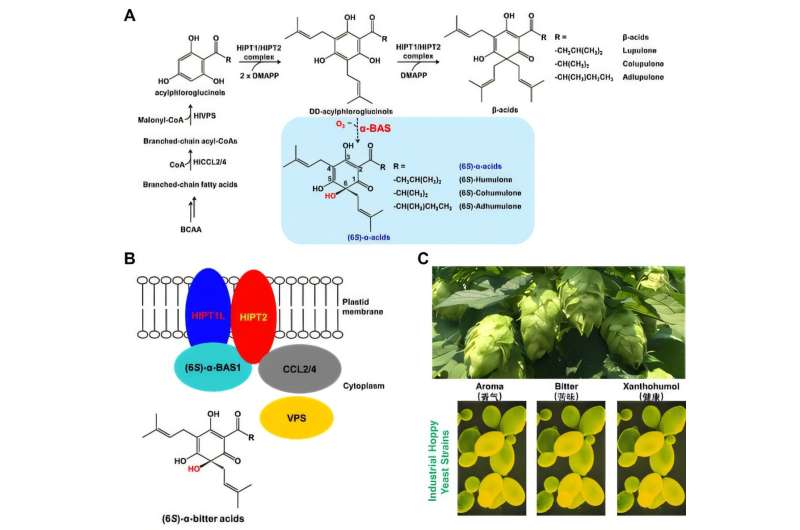Hops play a crucial role in the brewing of beer, not only contributing to its flavor but also influencing its economic viability. A recent study led by Prof. Wang Guodong from the Institute of Genetics and Developmental Biology at the Chinese Academy of Sciences has made significant strides in understanding how hops produce chiral α-bitter acids, which are responsible for the distinct bitterness in beer. The findings were published on November 5, 2025, in the journal Plant Communications.
Hops contain specialized metabolites that determine the flavor and quality of beer. Among these, terpenes provide an aromatic profile, while xanthohumol offers antioxidant benefits. The α-bitter acids, however, are what create the characteristic bitterness of beer and have historically acted as natural preservatives, extending shelf life before modern techniques were developed. Despite the known biosynthetic pathway leading to α-bitter acids, the enzyme responsible for the final production step—known as α-bitter acid synthase (α-BAS)—had not been functionally verified for over a decade.
To address this gap in knowledge, the research team developed a highly sensitive liquid chromatography–mass spectrometry (LC–MS) detection method. This innovation allowed them to differentiate between the two chiral forms of α-bitter acids, specifically the 6S and 6R types. Their analysis determined that hop glandular trichomes primarily accumulate the 6S-type α-bitter acid.
The study further delved into how the precursor of the α-bitter acid, deoxy-α-bitter acid, undergoes spontaneous oxidation when exposed to air, resulting in a mixture of both 6S and 6R forms. This chemical reaction had previously complicated efforts to confirm the function of α-BAS. By overcoming this challenge, the researchers were able to establish a yeast heterologous expression system and test over ten candidate genes.
The investigation identified the enzyme HlMO18 as the key catalyst that converts deoxy-α-bitter acid into the predominantly formed 6S variant. The team pinpointed essential amino acid residues critical for the enzyme’s activity. Additional mechanistic analyses revealed that the 6S-type α-bitter acid synthase forms a metabolic complex with upstream enzymes, clarifying why only the 6S form accumulates in the glandular trichomes of hops.
This research completes the biosynthetic map of α-bitter acids in hops, offering valuable insights that could influence the brewing industry. The team has also elucidated the biosynthetic pathways for three major flavor compounds found in hops. Looking forward, they aim to leverage synthetic biology to engineer yeast strains capable of producing “hoppy beer” with authentic flavors without the need for hop plants. This innovation could lower production costs and pave the way for creating more customized, flavor-rich beers.
As the brewing industry continues to evolve, these findings could mark a significant turning point, opening up new avenues for innovation and creativity in beer production. The study underscores the importance of hops not only as a flavoring agent but also as a vital contributor to the economic landscape of brewing.
For further details, refer to the work by Chengyong Feng et al., titled “A flavin-dependent monooxygenase favors the formation of (6S)-α-bitter acids in hop glandular trichomes,” published in Plant Communications.







